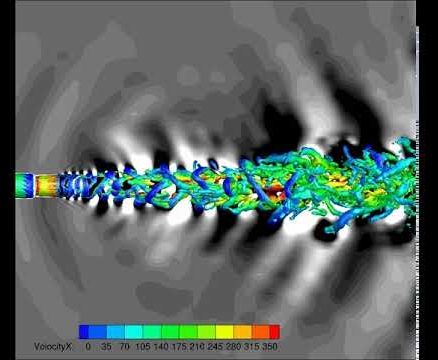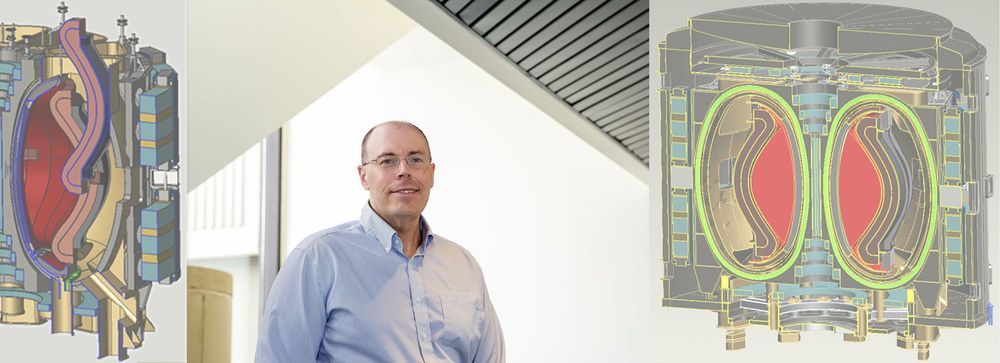Page 9246
Mar 20, 2019
We did a breakthrough ‘speed test’ in quantum tunnelling, and here’s why that’s exciting
Posted by Quinn Sena in categories: particle physics, quantum physics
Things get weird at the quantum level and now we know they can happen really fast when a particle pushes through an almost insurmountable barrier.
Mar 20, 2019
The March Journal Club by Dr. Oliver Medvedik will focus on this recent study that showed transplanting the bone marrow of young laboratory mice into old mice prevented cognitive decline in the old mice, preserving their memory and learning abilities
Posted by Steve Hill in categories: biotech/medical, life extension, neuroscience

These findings support the idea that cognitive decline is in part due to the aging of blood cells, which are produced in the bone marrow.
Abstract
Restoration of cognitive function in old mice by transfer of blood or plasma from young mice has been attributed to reduced C–C motif chemokine ligand 11 (CCL11) and β2-microglobulin, which are thought to suppress neurogenesis in the aging brain. However, the specific role of the hematopoietic system in this rejuvenation has not been defined and the importance of neurogenesis in old mice is unclear. Here we report that transplantation of young bone marrow to rejuvenate the hematopoietic system preserved cognitive function in old recipient mice, despite irradiation-induced suppression of neurogenesis, and without reducing β2-microglobulin. Instead, young bone marrow transplantation preserved synaptic connections and reduced microglial activation in the hippocampus. Circulating CCL11 levels were lower in young bone marrow recipients, and CCL11 administration in young mice had the opposite effect, reducing synapses and increasing microglial activation.
Mar 20, 2019
Project aims to tame noise from supersonic military jets with ‘swirl’ technology
Posted by Quinn Sena in categories: engineering, health, military

It’s cliché to describe something very noisy as “louder than a jet engine.” But supersonic jet engines, like those powering fighters flown by the U.S. military, are so much louder than regular jet engines that scientists have a special term for their sound—” broadband shock-associated noise.”
Now, a team of faculty and students from the Department of Aerospace Engineering at the University of Kansas will design and test innovative technologies to cut noise from supersonic military jets. The U.S. Department of Defense’s Strategic Environmental Research and Development Program (SERDP), the DoD’s environmental science and technology program, is supporting a one-year, $200,000 effort at KU, with the potential to expand that support in the years ahead.
Mar 20, 2019
Speeding the development of fusion power to create unlimited energy on Earth
Posted by Quinn Sena in categories: energy, space
Can tokamak fusion facilities, the most widely used devices for harvesting on Earth the fusion reactions that power the sun and stars, be developed more quickly to produce safe, clean, and virtually limitless energy for generating electricity? Physicist Jon Menard of the U.S. Department of Energy’s (DOE) Princeton Plasma Physics Laboratory (PPPL) has examined that question in a detailed look at the concept of a compact tokamak equipped with high temperature superconducting (HTS) magnets. Such magnets can produce higher magnetic fields—necessary to produce and sustain fusion reactions—than would otherwise be possible in a compact facility.
Menard first presented the paper, now published in Philosophical Transactions of the Royal Society A, to a Royal Society workshop in London that explored accelerating the development of tokamak-produced fusion power with compact tokamaks. “This is the first paper that quantitatively documents how the new superconductors can interplay with the high pressure that compact tokamaks produce to influence how tokamaks are optimized in the future,” Menard said. “What we tried to develop were some simple models that capture important aspects of an integrated design.”
Mar 20, 2019
One transistor for all purposes
Posted by Quinn Sena in categories: computing, economics, nanotechnology, physics
In mobiles, fridges, planes – transistors are everywhere. But they often operate only within a restricted current range. LMU physicists have now developed an organic transistor that functions perfectly under both low and high currents.
Transistors are semiconductor devices that control voltage and currents in electrical circuits. To reduce economic and environmental costs, electronic devices must become smaller and more effective. This applies above all to transistors. In the field of inorganic semiconductors, dimensions below 100 nanometers are already standard. In this respect, organic semiconductors have not been able to keep up. In addition, their performance with regard to charge-carrier transport is considerably worse. But organic structures offer other advantages. They can easily be printed on an industrial scale, the material costs are lower, and they can be transparently applied to flexible surfaces.
Thomas Weitz, a professor in LMU’s Faculty of Physics and a member of the Nanosystems Initiative Munich, and his team are working intensively on the optimization of organic transistors. In their latest publication in Nature Nanotechnology, they describe the fabrication of transistors with an unusual structure, which are tiny, powerful and above all versatile. By carefully tailoring a small set of parameters during the production process, they have been able to design nanoscale devices for high or low current densities. The primary innovation lies in the use of an atypical geometry, which also facilitates assembly of the nanoscopic transistors.
Mar 20, 2019
A surprising, cascading earthquake
Posted by Quinn Sena in categories: physics, supercomputing

The Kaikoura earthquake in New Zealand in 2016 caused widespread damage. LMU researchers have now dissected its mechanisms revealing surprising insights on earthquake physics with the aid of simulations carried out on the supercomputer SuperMUC.
The 2016 Kaikoura earthquake (magnitude 7.8) on the South Island of New Zealand is among the most intriguing and best-documented seismic events anywhere in the world – and one of the most complex. The earthquake exhibited a number of unusual features, and the underlying geophysical processes have since been the subject of controversy. LMU geophysicists Thomas Ulrich and Dr. Alice-Agnes Gabriel, in cooperation with researchers based at the Université Côte d’Azur in Valbonne and at Hong Kong Polytechnic University, have now simulated the course of the earthquake with an unprecedented degree of realism. Their model, which was run on the Bavarian Academy of Science’s supercomputer SuperMUC at the Leibniz Computing Center (LRZ) in Munich, elucidates dynamic reasons for such uncommon multi-segment earthquake. This is an important step towards improving the accuracy of earthquake hazard assessments in other parts of the world. Their findings appear in the online journal Nature Communications.
Mar 20, 2019
Local extinction of Southern California mountain lions possible within 50 years
Posted by Quinn Sena in categories: existential risks, genetics

Two isolated mountain lion populations in southern California’s Santa Ana and Santa Monica Mountains are at risk of local extinction, perhaps as soon as within 50 years, according to a study published in the journal Ecological Applications.
The study showed the extinction risk is due to low genetic diversity and mortality that affects the stability of the population. Mountain lion mortality is often caused by humans, but can also result from changes in the environment, such as wildfire and fluctuations in prey density.
Continue reading “Local extinction of Southern California mountain lions possible within 50 years” »
Mar 20, 2019
Physicists have discovered that rotating black holes might serve as portals for hyperspace travel
Posted by Quinn Sena in categories: cosmology, physics
Physicists discovered rotating black holes might serve as portals for hyperspace travel. Here’s what would happen if you travel through a black hole.
Mar 20, 2019
Partial Cellular Reprogramming to Reverse Cellular Aging
Posted by Steve Hill in categories: biotech/medical, genetics, life extension
We have talked about the potential of partial cellular reprogramming in previous articles, and today, we want to draw attention to a new paper that promises to further refine reversal of epigenetic aging in cells.
As we age, our cells experience alterations to their epigenetic markers, and this changes gene expression, which is proposed to be a primary reason we age. Recently, there has been considerable interest in resetting these epigenetic markers to reverse cellular aging, and this paper builds on that.
Three of the study’s authors, Prof. Vittorio Sebastiano, Jay Sarkar, and Marco Quarta, have founded Turn.bio, a biotech company that is working to bring partial cellular reprogramming to humans. The company is also currently enjoying the leadership of Gary Hudson from Oisin Biotechnologies, who is standing in as CEO to help the company get off the ground and funded.
Continue reading “Partial Cellular Reprogramming to Reverse Cellular Aging” »














